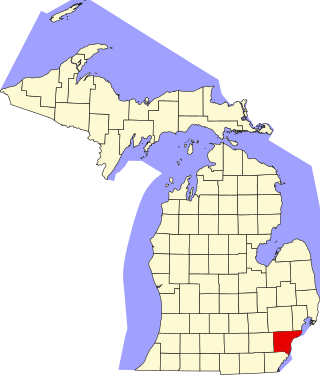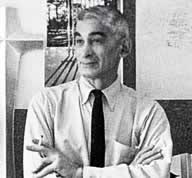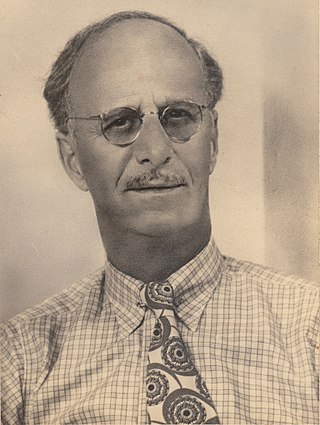Related Research Articles

Bernard Ralph Maybeck was an American architect in the Arts and Crafts Movement of the early 20th century. He was an instructor at University of California, Berkeley. Most of his major buildings were in the San Francisco Bay Area.

Paul Revere Williams, FAIA was an American architect based in Los Angeles, California. He practiced mostly in Southern California and designed the homes of numerous celebrities, including Frank Sinatra, Lucille Ball and Desi Arnaz, Lon Chaney, Barbara Stanwyck and Charles Correll. He also designed many public and private buildings.

This is a list of the National Register of Historic Places listings in Wayne County, Michigan.

Nicholas Joseph Clayton was a prominent Victorian era architect in Galveston, Texas.

The Swiss Avenue Historic District is a residential neighborhood in East Dallas, Dallas, Texas (USA). It consists of installations of the Munger Place addition, one of East Dallas' early subdivisions. The Swiss Avenue Historic District is a historic district of the city of Dallas, Texas. The boundaries of the district comprise both sides of Swiss Avenue from Fitzhugh Street, to just north of La Vista, and includes portions of Bryan Parkway. The District includes the 6100-6200 blocks of La Vista Drive, the west side of the 5500 block of Bryan Parkway the 6100-6300 blocks of Bryan Parkway, the east side of the 5200-5300 block of Live Oak Street, and the 4900-6100 blocks of Swiss Avenue. The entire street of Swiss Avenue is not included within the bounds of the Swiss Avenue Historic District. Portions of the street run through Dallas' Peaks Suburban Addition neighborhood and Peak's Suburban Addition Historic District. 5215 Swiss was built in 1914 and was the home of J. P. Cranfield
Marion Fresenius Fooshee was an American architect active in the Dallas, Texas (USA) area.

Charles M. Goodman was an American architect who made a name for his modern designs in suburban Washington, D.C., after World War II. While his work has a regional feel, he ignored the colonial revival look so popular in Virginia. Goodman was quoted in the 1968 survey book Architecture in Virginia as saying that he aimed to "get away from straight historical reproduction."
Henry O. Jaastad (1872–1965) was an influential Tucson, Arizona architect. His firm created over 500 buildings and Jaastad was Mayor of Tucson for 14 years. A number of his works are listed on the U.S. National Register of Historic Places for their architecture.

The East End Historic District encompasses a large 19th-century residential area in eastern Galveston, Texas. The area is roughly bounded by Broadway to the south, Market St to the north, 19th St to the west, and 9th street to the east. The area has one of the best-preserved and largest concentrations of 19th-century residential architecture in Texas. It was developed mainly at a time when Galveston was the state's preeminent port. The historic district, designated locally in 1970, was placed on the National Register of Historic Places in 1975 and declared a National Historic Landmark in 1976.

This is a list of the National Register of Historic Places listings in Detroit, Michigan.

Alfred Charles Finn was an American architect. He started in the profession with no formal training in 1904 as an apprentice for Sanguinet & Staats. He worked in their offices in Dallas, Fort Worth, and Houston. His credits during his tenure residential structures, but firm was a leader in steel-frame construction of skyscrapers.

Sanguinet & Staats was an architectural firm based in Fort Worth, Texas, with as many as five branch offices in Texas. The firm specialized in steel-frame construction and built many skyscrapers in Texas. The firm also accepted commissions for residential buildings, and designed many buildings listed on the National Register of Historic Places.

Lang & Witchell was a prominent architectural firm in Dallas, Texas, active from 1905 to 1942.
McKissack & McKissack is an American design, program management and construction firm based in New York. It is the oldest Black-owned architecture and construction company in the United States.

Eugene Thomas Heiner was an American architect who designed numerous courthouses, county jails, and other public buildings in Texas. He was born in New York City, apprenticed in Chicago, and studied further in Germany. His works includes buildings listed on the U.S. National Register of Historic Places.

Kilham & Hopkins was an architectural firm in Boston, Massachusetts formed in 1899 or 1900 by its founding members, Walter Harrington Kilham and James Cleveland Hopkins. The firm later became Kilham, Hopkins & Greeley after William Roger Greeley joined the firm in 1916, and Kilham Hopkins Greeley and Brodie after Walter S. (Steve) Brodie joined the firm in 1945.
Mark Lemmon (1889–1975) was an American architect from Dallas, Texas.
Arthur B. Heaton was an American architect from Washington, D.C. During his 50-year career Heaton designed over 1,000 commissions, including many notable buildings listed on the National Register of Historic Places (NRHP). He was the first supervising architect of the Washington National Cathedral and one of several local architects responsible for designing many of the buildings in the Burleith, Cleveland Park, Kalorama Triangle, and Woodley Park neighborhoods.

Bertram Charles Hill was a British-born architect who made his home in Dallas, Texas, and helped design many of the most famous buildings in the city.

Charles D. Hill was an American architect practicing in Dallas, Texas during the first three decades of the twentieth century.
References
- 1 2 3 "Hotel Andaluz". SAH ARCHIPEDIA. Jul 17, 2018. Retrieved Jan 25, 2023.
- ↑ Anton Korn at archINFORM
- 1 2 3 4 5 6 7 "National Register Information System". National Register of Historic Places . National Park Service. November 2, 2013.
- ↑ Mary P. Davis (November 29, 1983). "National Register of Historic Places Inventory/Nomination: Old Hilton Hotel / Plaza Hotel / La Posada de Albuquerque". National Park Service . Retrieved April 22, 2021. With accompanying six photos from 1946-83
- 1 2 Nancy Cash Cobb; LeRoy Johnson, Jr. (October 30, 1982). "National Register of Historic Places Inventory/Nomination: San Angelo National Bank Building / Trimble-Batier-Cobb Insurance" (PDF). Texas. Retrieved April 22, 2021. Includes 11 photos from 1981-82. (Also available, with additional related correspondence, at National Archives)
- 1 2 3 4 5 6 7 8 9 10 11 12 13 14 15 16 17 18 19 20 21 "Anton Korn, Dallas, Texas". Doug Newby. Retrieved April 22, 2021.
- ↑ Pam Smith (April 25, 2001). "Will Rogers' statue artist dies at 88". Dailytoreador.com.
- ↑ "Waggoners History". Archived from the original on 2016-10-25. Retrieved 2012-04-23.
- ↑ Rubin, Dana (July 21, 2017). "The Texas 100: Money Becomes Electra". Texas Monthly.
- 1 2 Cartwright, Gary (January 2004). "Showdown at Waggoner Ranch". Texas Monthly . Retrieved 21 July 2022.
- ↑ "Anton Korn Design - 4700 Preston Road, Dallas, Texas". Architecturally Significant Homes.
- ↑ "Lakewood Home Designed by Architect Anton Korn is an Iconic Architecturally Significant Home in the Neighborhood". Architecturally Significant Homes. Retrieved Jan 25, 2023.
- ↑ "Architect Anton Korn Designed American Foursquare Home in Old Highland Park Neighborhood - 3601 Crescent Avenue, Dallas, Texas". Architecturally Significant Homes. Retrieved Jan 25, 2023.
- ↑ "Architect Anton Korn Designed House in Old Highland Park Neighborhood - 3708 Alice Circle, Dallas, Texas". Architecturally Significant Homes. Retrieved Jan 25, 2023.
- ↑ "Architect Anton Korn Designed House in Old Highland Park Neighborhood - 3700 Miramar Avenue, Dallas, Texas". Architecturally Significant Homes. Retrieved Jan 25, 2023.
- ↑ "Architect Anton Korn Designed Residence in Old Highland Park Neighborhood - 3711 Beverly Drive, Dallas, Texas". Architecturally Significant Homes. Retrieved Jan 25, 2023.
- ↑ "Architect Anton Korn Designed Real Estate in Old Highland Park Neighborhood - 3727 Beverly Drive, Dallas, Texas". Architecturally Significant Homes. Retrieved Jan 25, 2023.
- ↑ "Architect Anton Korn Designed Home in Old Highland Park Neighborhood - 4201 Lakeside Drive, Dallas, Texas". Architecturally Significant Homes. Retrieved Jan 25, 2023.
- ↑ "DDD Behind the Scenes: An Inside Look at the Home of Bill Hutchinson". Dallas Design District. March 31, 2016. Retrieved April 22, 2021.
- ↑ "Architect Anton Korn Designed Estate Home in Old Highland Park Neighborhood - 4301 Lakeside Drive, Dallas, Texas". Architecturally Significant Homes. Retrieved Jan 25, 2023.
- ↑ "Architect Anton Korn Designed House in Old Highland Park Neighborhood - 4900 Lakeside Drive, Dallas, Texas". Architecturally Significant Homes. Retrieved Jan 25, 2023.
- ↑ "Architect Anton Korn Designed House in Old Highland Park Neighborhood - 4302 Overhill Drive, Dallas, Texas". Architecturally Significant Homes. Retrieved Jan 25, 2023.
- ↑ "Architect Anton Korn Designed Architecturally Significant Tudor Home in Old Highland Park Neighborhood - 3635 Beverly Drive, Dallas, Texas". Architecturally Significant Homes. Retrieved Jan 25, 2023.
- ↑ Paula Bosse (March 7, 2022). "FLASHBACK : DALLAS: 3635 Beverly Drive, The Residence of Architect Anton F. Korn — 1926". With comment by Julie Lloyd, March 10, 2022.
- ↑ "Architect Anton Korn Designed Home in Old Highland Park Neighborhood - 3615 Beverly Drive, Dallas, Texas". Architecturally Significant Homes. Retrieved Jan 25, 2023.
- ↑ "Architect Anton Korn Designed Home in Highland Park Neighborhood - 4248 Armstrong Parkway, Dallas, Texas". Architecturally Significant Homes. Retrieved Jan 25, 2023.
- ↑ "Architect Anton Korn Designed Residence in Highland Park Neighborhood - 4208 Armstrong Parkway, Dallas, Texas". Architecturally Significant Homes. Retrieved Jan 25, 2023.
- ↑ "Architect Anton Korn Designed Home in Highland Park Neighborhood - 4216 Versailles Avenue, Dallas, Texas". Architecturally Significant Homes. Retrieved Jan 25, 2023.
- ↑ "Architect Anton Korn Designed House in Highland Park Neighborhood - 4221 Versailles Avenue, Dallas, Texas". Architecturally Significant Homes. Retrieved Jan 25, 2023.
- ↑ "Architect Anton Korn Designed Home in Highland Park Neighborhood - 4429 Belclaire Avenue, Dallas, Texas". Architecturally Significant Homes. Retrieved Jan 25, 2023.
- ↑ "Architect Anton Korn Designed Residence in Highland Park Neighborhood - 3900 Potomac Avenue, Dallas, Texas". Architecturally Significant Homes. Retrieved Jan 25, 2023.
- ↑ "Architect Anton Korn Designed Home in University Park Neighborhood - 3319 Bryn Mawr Drive, Dallas, Texas". Architecturally Significant Homes. Retrieved Jan 25, 2023.
- ↑ "Greenway Parks Neighborhood Home". Architecturally Significant Homes. Retrieved Jan 25, 2023.
- ↑ "Anton Korn, Dallas, Texas". Doug Newby. Retrieved September 14, 2022.
- ↑ "3816 Stratford Avenue, Dallas, Texas". Architecturally Significant Homes. Retrieved Jan 25, 2023.
- ↑ "Revel in Texas history with legendary home". Dallas Morning News. A sponsored post.
- ↑ Carolyn Pitts (January 1976). National Register of Historic Places Inventory-Nomination: Galveston-East End Historic District. National Park Service. and Accompanying seven photos, undated and from 1979 (32 KB)
- ↑ "East End Historic District". National Historic Landmark summary listing. National Park Service. Archived from the original on January 21, 2009. Retrieved June 23, 2008.
- ↑ Anton F Korn Home, 1916 Brick Mansion in Galveston, Texas. Includes 38 photos.
- ↑ "These century-old houses are for sale in Galveston". Houston Chronicle. 2017.
- ↑ "Mickey Cavazos, REALTOR® - Houston, TX 77056 with eXp Realty LLC". www.har.com. Retrieved Jan 25, 2023.
- ↑ Briana Zamora-Nipper (October 1, 2020). "Peek inside: Historic Galveston home known as the 1916 Runge House hits the market for $1.2 million".
- ↑ Facebook post Quote="In 1916, architect Anton F. Korn, a representative of New York architects Crow, Lewis & Wickenhoefer, designed this Italian Renaissance villa for prominent German businessman, Louis H. Runge and his wife, Anita. The property was home to the Runge family until 1988. / In the fall of 1916, the Runge family moved into their new home. Daughters Margarette and Elisabeth never married. In 1968, Elisabeth retired from the University of Texas Medical Branch (UTMB) where she had managed the medical library since 1922. She sold the house in 1988 to the Sealy and Smith Foundation, a philanthropic foundation established to benefit UTMB. The house was restored and served as the residence for the university’s presidents from 1989 until 2004."
- ↑ "Peek inside: Historic Galveston home known as the 1916 Runge House hits the market for $1.2 million" . Retrieved September 14, 2022. Includes multiple photos, but these did not display 9/14/2022.
- ↑ Doug Newby. "Thoughts on the Contributions of Architect Anton Korn".